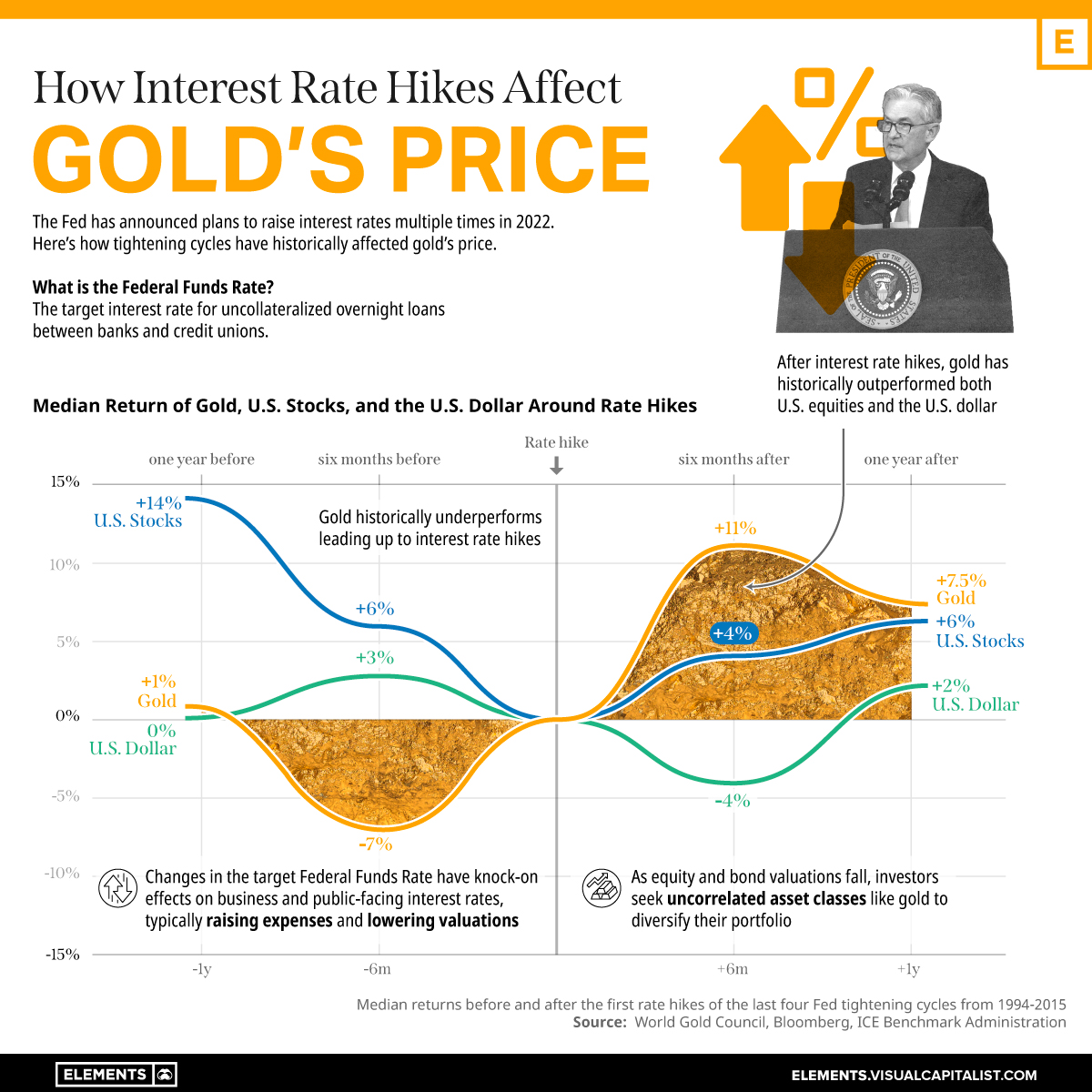
Nearly every major market is affected by rate hikes from the US Federal Reserve, and gold is no exception.
While rising interest rates bring macroeconomic headwinds for equity valuations, gold has had a special relationship with interest rates in recent hikes.
This graphic uses data from the World Gold Council to show how gold, US stocks, and the US dollar have historically performed around interest rate hikes.
The target federal funds rate, often referred to in media coverage more broadly as “interest rates,” is a projected overnight lending rate for banks and credit unions set by the U.S. Federal Reserve.
Banks and credit unions need to hold a certain amount of cash reserves at the end of each day, so they lend and borrow from each other overnight to ensure they meet reserve requirements (or get some extra income by lending excess cash).
The target federal funds rate gives an interest rate range of 0.25% that banks and credit unions must be within when determining interest rates for these overnight loans.
When the Federal Reserve wants to curb excess spending and inflation, it raises interest rates and implements tighter monetary policy, marking the beginnings of a “tightening cycle.” This goes on to have knock-on effects on nearly every business or public-facing interest rate, and in turn, nearly every asset.
As rates rise during tightening cycles, holding onto and lending out cash becomes more profitable, often resulting in investors de-risking by selling assets like stocks and bonds.
During these times, investors also seek out uncorrelated assets that are uniquely connected to these macroeconomic factors, often turning to gold.
While gold underperforms compared to US stocks and the dollar leading up to rate hikes, past tightening cycles saw gold hit new all-time highs in the 2000s.

In December of 2015, Janet Yellen’s first rate hike marked gold’s bottom at $1,050 an ounce, right before the precious metal nearly doubled to all-time highs.
In the previous tightening cycle, which began with Alan Greenspan’s interest rate hike in June of 2004, similarly marked a bottom for gold at $380 an ounce. After, gold’s price rallied by 400% through both rising and falling interest rates, reaching just above $1,900 an ounce in 2011.
The upcoming tightening cycle in 2022 is expected to be aggressive, with Goldman Sachs raising their forecasted number of 25 basis point (0.25%) rate hikes this year from five to seven.
While gold’s price has chopped around the $1,700–1,900 range for more than the past year, the start of this new tightening cycle could be the catalyst that spurs the next gold bull run.
(This article first appeared in the Visual Capitalist Elements)
Comments